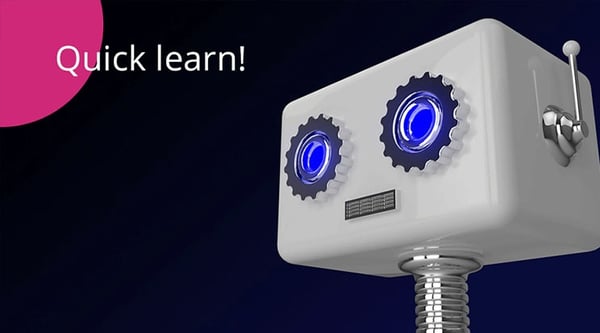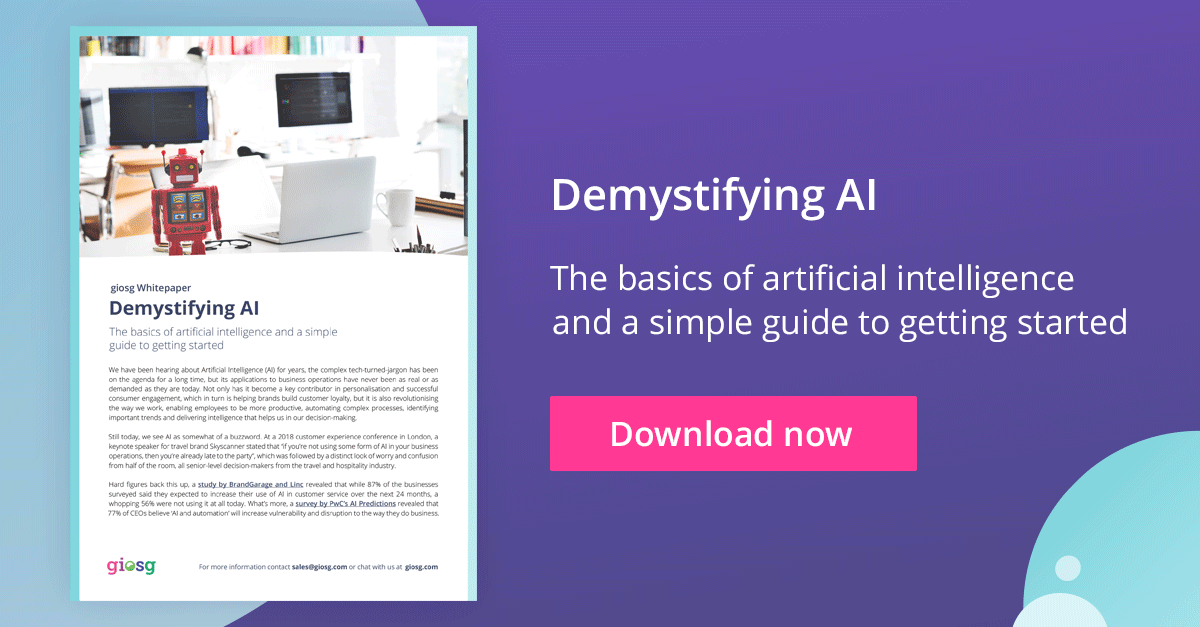Investment in AI is showing no signs of slowing down - actually it's quite the opposite. Companies clearly see and understand the importance of optimising business operations and are not shying away from using the latest technologies.
New jobs will emerge and with AI taking over your everyday tasks, you'll have more time to innovate or do whatever it is that you like to do. The term Artificial intelligence frightens some and fascinates others, this is no surprise since we naturally fear the unknown.

There is an increased demand for clarity on how and what consumer information or data is being collected and used by businesses. Not only that, consumers want to gain further insight into how AI models and algorithms really work - the need for visibility on what's under the lid of the algorithmic black box that is AI is at an all-time high.
In this blog we breakdown, what AI, what it is not and how businesses can benefit from it.
What does AI mean?
Firstly, AI is a big umbrella term which includes many different techniques and subsets that people easily mix together
Terms like machine learning and deep learning are subsets to artificial intelligence. Most of us interact with AI on a daily basis without even realising. The spam filter in your inbox, Snapchat face filters, Google Maps and online shops are just a few examples. Now if a dog filter on Snapchat doesn’t make AI seem less frightening, I don’t know what will.
When googling the term, you find several discussions about what actually can be defined as AI. Well, no one really has an exact definition and the term is still being debated by academics all over the world.
Even though we don’t have an exact definition of AI, we could say it’s an artificial system that solves tasks requiring intelligence by perceiving its environment. Without a human telling it exactly what to do.
Sounds cool right? Now let's go back and have a look at those confusing terms;
- Machine learning is the type of AI that is used in most of the examples we face in our everyday lives. It’s based on a software learning through experience and using this experience to define what will happen next. The more frequent of a visitor you are, the more knowledge it will have on you.
- Deep learning, on the other hand, has a more complex structure and is based on attempts to model the brain functionality. The concept is built around the ideas of a 'neural network' , and although it is still a simplified version of real brain functionalities, this approach has been found to be very efficient for multiple machine-learning applications.
How does AI compare to human intelligence?
AI does not need to be comparable to human intelligence.
This seems to be a general misunderstanding. Artificial intelligence that is comparable, or could potentially outsmart human intelligence is called general AI.
This type of artificial intelligence does not exist in the world today, as not even the most advanced robots can be compared to the least intellectual human being.
There are too many components in natural intelligence which can’t be traced yet. So no panic, our AI team reassures us that the risk of robots taking over is not a fear of the near future.
Want to know what the future holds? Read about the latest trends in AI.
Instead, let's concentrate on the type of AI that we see around us online on a daily basis; narrowed or weak AI, This includes what playlists Spotify recommends you, what ads you see on Facebook, asking Siri for valuable advice, all those things we don’t even pay attention to anymore.
This is the type of AI that can be taught to perform specific tasks, but does not have its own intelligence.
How does AI work?
AI solves various problems and makes many processes more efficient and easy. AI models work with annotation tool, which trains them to work more accurately''.It assists the marketing team with promoting ads and the sales team with finding prospects.
At the same time it’s replacing humans in many industries.
Looking back, innovations should not be held back but let flowing freely. If they wouldn’t we would certainly not be talking about AI or Live Chats today.
Check out our blog on 5 fun applications of AI you might not have heard of before!
What are the challenges of using AI in business?
The challenge for businesses using commercial AI is transparency and that very rarely do they want to share their all-important source codes.
Keeping proprietary information safe and perhaps even secret is often a top priority, especially in the current competitive market.
Not to mention, making source code transparent isn't straightforward - machine learning algorithms can often be built on hundreds of lines of code involving masses of data, which would most likely not be understandable to the average person.
And perhaps making the back-end interpretable to consumers isn't necessary in the case of commercial AI, especially when it’s seamlessly integrated into our daily lives - AI that provides the right content at the right time is no longer being questioned and funnily enough, we might actually expect or even feel entitled to be provided with very personalised content specific to our needs at that particular moment in time.
Moreover, consumers have realised that there are benefits to providing companies with their data - In a survey by Deloitte and SSI, 79% of respondents said they would be willing to give-up more information to companies if there was a clear benefit for them doing so.
If you've read our previous blog post “how to get started with AI - as told by our AI expert”, you will know that data is a key factor in AI. In order for it to successfully work, it needs a fair bit of data to reach a point of being able to deliver sufficient results and to build the machine learning model.
Most commercial AI collects anonymous usage data for troubleshooting, profiling, statistics and service improvement purposes. So the data collected is very much generic, does not link to any personal information and cannot be connected to any individual’s data.
Our AI, giosg Target, is strictly limited to collecting data on the following information: operating system, device, browser type, visited URLs, and timestamp.
How do we use AI?
At giosg we track visitor behavior, which includes page visits, time on site and returning visits. Based on this behavior we train a machine learning system to build a predictive model.
We continuously use A/B testing to test different marketing actions to see how that affects the conversion rate. giosg can help companies whose core business isn’t AI to make use of it in their online business.
